To Live and Die in the South: The Chinese Story
Until the last third of the past century, there were few Chinese immigrants in the Deep South. By the 1870s, a handful of Chinese immigrants began to flee from the violence they often encountered on the Pacific coast to many small towns throughout the region. Almost all were young or middle-aged men seeking a way to earn a living, send money back to impoverished families in China, and eventually return to China. Most of these Chinese operated hand laundries or small neighborhood grocery stores.
Life in the racially segregated Jim Crow South presented challenges for the Chinese, as they were neither black nor white. Given that Chinese were the only, or one of a handful of Chinese, in towns where they settled, there were no “Chinatowns” where they could work and live as found in places such as New York City or San Francisco. They generally lived and worked in poorer parts of town where the rent was low.
If they died, where could they be buried? Being so few in number, they could not afford to finance a cemetery for Chinese only. In towns where only a few Chinese lived, there might be no need for a cemetery because there were no deaths over many decades. It is possible that in these circumstances, a Chinese who died might be buried in either a black or white cemetery without opposition. In 1890, H. Leon, the first Chinese, or Celestial as they were usually referred to in newspapers, to die in Atlanta was buried in a white cemetery following funeral services held at an Episcopal church. In contrast, according to Reverend Ted Shepherd who ministered to the Chinese in Greenville, Mississippi, for many years, early Chinese decedents were buried in a Negro cemetery, Live Oaks.
Mississippi had a large number of Chinese but they were scattered up and down the delta region with only a handful in most towns. Greenville, in the heart of the delta, was unique in creating a small cemetery in 1913 for Chinese only. When a need for more space arose, the Chinese Cemetery Association purchased 5.8 acres in 1931 for $1,000 donated by Chinese businesses and some of their wholesalers to replace the original Chinese cemetery. It provided a resting place not only for Chinese who died in Greenville but also for those who died in other delta towns.
The delta Chinese adorned the cemetery with aspects of Chinese culture and beliefs. A pagodalike structure serves as the central entrance. A spiked iron gate that can be locked with a chain was needed to thwart acts of vandalism that occurred occasionally in the past. On a marble slab on the left side of the main entrance is a poem in Chinese that depicts the soul resting in heaven on a clear night with a bright moon. The soul is thinking about and enjoying memories of home and family. On the right side of the main entrance the poem goes on to state that this place is quiet and peaceful and asks, why not be satisfied where you are?
There are two other entrances to the left and right of the central entrance. Each of these entrances has a sun symbol on a post on the left side to represent day or life while a star symbol on the post on the right side represents night or death.
New Orleans has the largest number of Chinese buried in the South. One section of a white cemetery, Cypress Grove, holds a Chinese tomb, dedicated in 1904 by the Soon On Tong Association for the burial of its own members. Tongs were fraternal organizations that provided vital services to the early Chinese, including job placement, immigration services, Taoist shrines, and gambling facilities as well as funeral arrangements and the transportation of remains back to China.
The Chinese tomb held many decedents in its fifty-two vaults that occupied four levels on each of two wings. New Orleans is below sea level so caskets had to be placed above ground due to the dangers of flooding. An older Chinese tomb dates back to the 1890s in the historic St. Louis No. 1 Cemetery behind the French Quarter. In the 1960s, the On Leong Association built a third Chinese tomb in Greenwood Cemetery. There are at least another hundred Chinese family tombs in the city.
Chinese, like other immigrants in New Orleans, built “society tombs” that held more than one descendant to lower costs. The front of the tomb included an enclosed worship space, an altar, and a “spirit tablet” inscribed with the name of the deceased in the center, their ancestral hometown, and the names of any surviving children and grandchildren.
Early Chinese were typically buried in a temporary grave because they came as sojourners with the intent to eventually return to China to be reunited with their families when they could no longer work. If they died before they could return, many wanted their bones buried in China. Several years after the burial, the remains would be exhumed, cleaned, packaged, and shipped to China.
In Augusta, Georgia, for example, eight Chinese bodies were disinterred from cemeteries in 1919 and sent to Atlanta to be prepared for shipment to China. It was noted that these men had received Christian burials in Augusta but they would receive Confucian rites in China before being placed in their final resting place.
By the 1930s, however, this practice waned as more Chinese felt less need to be reburied in China because they had succeeded in bringing their families over or had established new families here in the United States. World War II, followed by the rise of Communist China in 1949, further discouraged plans for reburial in China.
In cities with many Chinese, decedents were buried in a section of a white rather than a Chinese cemetery. Magnolia Cemetery in Augusta is a white cemetery but Chinese could be buried there. Greenwood Cemetery, a white cemetery in Atlanta has a section where Chinese are buried that is enclosed on three sides by an iron-pipe rail fence. An obelisk some thirty feet tall rises in the center of the section. The inscription at the base reads Chee Hung Tong, Chinese Free Masons, September 8, 1911, and recognizes the Chinese benevolent organization that provided for the space. The decedents were not all from Atlanta but included Chinese from as far away as Chattanooga, Tennessee, who wanted to be buried near other Chinese.
Elmwood, a white cemetery in Memphis, also had a section for Chinese burials.
Headstones of many, but not all, graves are inscribed with the names of the decedents in Chinese characters with or without their American names as shown in the marker from the grave of Wong Kam Chen in Augusta, Georgia. His father, Wong Yoke Hing, was buried in the same grave sometime in the 1920s, but around 1930 his remains were exhumed and returned to China. His son died soon after and since his father’s grave was then conveniently vacant, he was buried in it.
The practice of placing names on tombstones in Chinese characters is important because Chinese names often did not match their American names. The Chinese Exclusion laws, in effect from 1882 to 1943, against the admission of Chinese laborers, led many Chinese to purchase identity documents that bore names of the owners rather than their own names. For example, someone whose clan name was actually Chan might have to use a different surname over his lifetime if the surname on his identity document differed from his real name. However, after he died, his grave marker would bear, in Chinese characters, his true surname, Chan. Names of decedents written in Chinese characters on tombstones has proved invaluable information for accurate tracing of family histories.
Chinese Funeral Customs
A Chinese funeral involves an elaborate set of rituals that were invoked if there was a large Chinese community. Chinese in the South, due to their small numbers, were limited in the extent to which they could follow traditional customs. There was no difficulty in following the custom of providing arriving mourners with two symbolic tokens: a piece of hard candy and a nickel. The candy served to provide a sweet taste to ease the bitterness of sorrow and the coin represented hope for prosperity. At the end of the service, guests received a small red envelope or lai see containing a quarter so that they might buy more candy. In contrast, the traditional ritual of having a small marching band leading a procession of mourners behind the hearse after the funeral service as it passed by the decedent’s residence or place of business for a brief pause was impossible in places with small Chinese populations. A family member at this site would remove a black ribbon bow from the door that the funeral director would place on the casket, symbolizing that the spirit of the deceased had left the home to join the body for the “long journey.” The procession would resume its way to the cemetery for the burial after which the family hosted a longevity dinner for the guests at a Chinese restaurant.
Qing Ming Rituals
Chinese all over the world pay respect to deceased relatives during the Qing Ming spring ritual also known as Tomb-Sweeping Day. This traditional Chinese festival occurs on the first day of the fifth solar term of the traditional Chinese lunar calendar. The literal translation of Qing Ming is “clean and bright.” On this day each year Chinese sweep the graves of their ancestors. The festival is an important ancestor worship ritual in which families clear weeds around the tomb and add fresh soil to show their care of the dead. They place offerings of favorite foods of the deceased at the grave along with paper resembling money. This is all burned in the hope that the deceased will not lack food and money. Incense is burned and prayers are offered. In contemporary Hong Kong, Chinese also burn paper imitations of mobile phones, laptops, refrigerators, air conditioners, and even luxury cars.
Westerners who typically bring only flowers to the gravesite are surprised and even amused by the Qing Ming rituals of Chinese as illustrated by this 1895 Atlanta newspaper account describing Chinese customs at the Westview Cemetery.
A peculiar part of the exercises was that the offerings were all set at the foot of the deceased, and the menu offered for the delectation of the particular deity whom they wished to honor was of the choicest viands so fondly cherished by the Chinese.
At the foot, on either side of the grave were placed two small candles of red . . . between these were arranged three little bowls filled with boiled rice . . . three tiny cups of fragile and beautiful design were arranged in a row in front of the rice bowls. These cups were filled with whisky. Next came a roasted fowl, a huge pieced of boiled pork, three chopsticks, and then a profusion of apples, pears, and bananas.
Each member of the party, with one exception, approached the foot of the banquet table, and after making various signs of his utter unworthiness to partake of the good things, took up one of the cups, and, after sprinkling its contents about the feast, refilled his cup, and with a final salaam made way for the next. . . . At the conclusion of these ceremonies a huge pile of varicolored papers was set on fire . . . it was thought that the party would leave the whisky . . . but they did not do so for they put the liquor back and left everything else.
Over time, Chinese in the South practiced the traditional rituals less extensively as in the past, especially later generations of descendants who adopted Western practices. Edward Wong, who grew up in Augusta, recalls that during Qing Ming his family would visit the grave of his cousin Wong Kam Chen. Other Chinese families would also gather at the cemetery during Qing Ming to pay respects to their deceased relatives. Afterward, they would all depart in a procession to visit two other nearby cemeteries where only a few Chinese were buried. Chinese today still uphold the spirit of Qing Ming to honor one’s ancestors even though most of the newer generations, especially those born in the South, have adopted Western funeral customs.


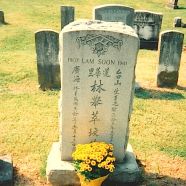





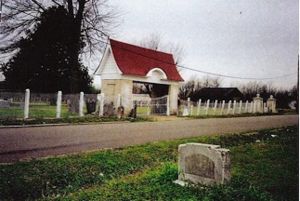
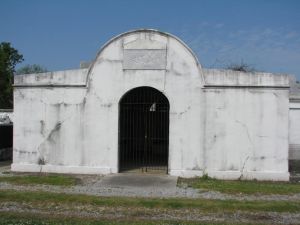
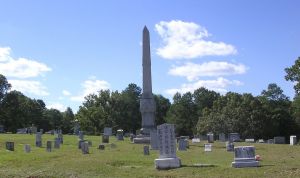
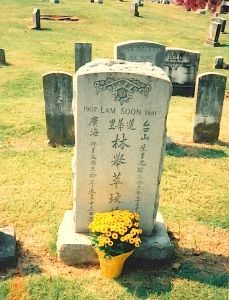
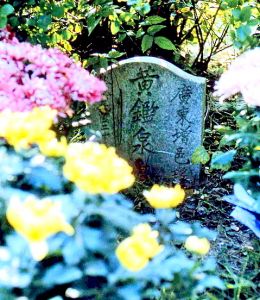
I deeply appreciate this story. I’m 33 and I long to connect with my ancestors in this kind of corporeal way, but I logically know there is no longer a physical body which I can visit. I like the way that you’ve factually, but also lyrically described the traditions which make the living feel closer to their deceased loved ones. I take consolation knowing that I can re-imagine and explore ways of visiting my family’s graves with a global awareness of this universal desire to care for people or to love them when they are gone.
Thank you, for the time you put into crafting this writing. I’m grateful.
Sincerely,
Bea
Bea, I appreciate seeing your comments about the article very much and am delighted that it was so meaningful for you.
My Chinese friend was born and raised in the Delta. Through Facebook, she has shared several of your articles, which I’ve enjoyed reading as an ABC who was raised in Los Angeles. Until my friend shared your articles, I knew very little about the Chinese born and raised in the South. Your articles are enlightening and fascinating. They also provide insight into the customs and practices of my now-deceased immigrant parents, which were never explained to me as I was growing up. I look forward to learning more.
thanks for your compliments…glad my posts have been interesting and informative for you!
I enjoy reading your article living and die in the south. I was born and raise in the south in the Delta area. I have been to quite a few funerals in the south my youth age and have learned how the deceased people are respect. It is quite different out here in CA. I am glad that my post of the south has being appreciated by many Chinese friends that I have met and become a friend to them. Most of my friends want to know my life in the south before I came to CA
John,
Thanks for such a comprehensive description of funeral rites in the Mississippi Delta for the Chinese community. My grandfather, Won Long was interred originally in Greenville’s 1913 Chinese cemetery. It was very difficult to observe Qing Ming rituals as every year from when I was 5 until 17 my dad and I would have to hack through very thick growths of trees and schrubs to get to grandpa’s grave. Finally when I was 19 my grandmother, Ho Shee Long had his bones exhumed and buried in the New cemetery. She had a very elaborate urn made in California for this new burial. As I was at university, my dad told me that his eldest and youngest sons did the honors as prescribed by our Long family village customs (rituals). Only his brother and my mother (his oldest child) are also buried in Greenville. Kind of sad that Modern times have my mothers’s Family so scattered throughout the USA. During last October’s Mississippi Delta Chinese gathering I was able to take our daughter to pay respect to her great grandfather and grandmother.